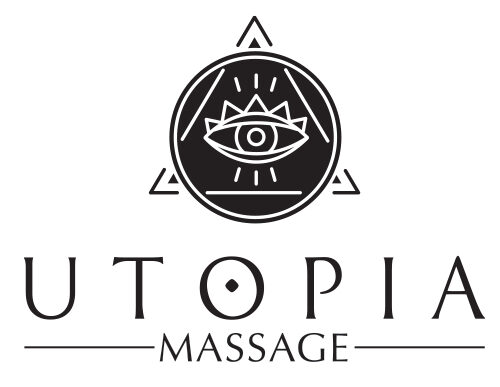A deep tissue massage targets the deeper layers of connective tissue and muscles throughout the body.
Treatment focuses on areas of defined pain and tension. Injuries or chronic pain can result in adhesions or trigger points, more commonly referred to as knots. These adhesions form in tendons, ligaments, and muscles to cause pain, poor blood circulation, and limited range of motion. The goal of a deep tissue massage is to break down adhesions to restore mobility and reduce pain. Pressure is provided by the therapist using hands, elbows, fingertips, knuckles, and forearms to stimulate the muscles and reduce adhesions. Through slow strokes and targeted deep pressure, chronic patterns of tension in the body are released. The slower pace of this massage assures that every muscle receives care.
Deep breathing is encouraged of the client during targeted areas to supply the muscles with additional oxygen and ease discomfort. If at any time during your massage session the treatment is uncomfortable or painful, be sure to communicate this with your massage therapist. This type of massage therapy may cause some discomfort as trigger points are released deep in your body’s connective tissues, but only to the level that is acceptable to you. Communication between the therapist and client is the key to an effective and beneficial deep tissue massage.
Following treatment, a client is encouraged to remain hydrated, drinking plenty of water to flush wastes out of the body. Not drinking enough water following this type of massage can result in additional post-massage tenderness. It is possible that you might feel some soreness the day after a deep tissue massage even if you do drink water. It should pass within one to two days. More than one treatment may be necessary to break down adhesions and eliminate scar tissue. While one massage can help you to feel better, it is only a quick fix. Undoing adhesions and tension that has built up over an entire lifetime is best achieved with regular therapeutic sessions. A few sessions over a short period of time can help to achieve this in the beginning, followed by maintenance that can be spread out over a longer period of time.
Benefits
- Help manage pain and relieve muscular tension
- Reduce frequency of headaches
- Improve posture, balance, flexibility, and range of motion
- Enhance rehabilitation of injured muscles
- Ease medication dependence
- Improve circulation
- Break down scar tissue deep in the muscle belly
Book your treatment today
Hours
Sunday – Tuesday: Closed
Wednesday – Friday: 8am – 5pm
Saturday: 8am – 2pm
Contact
Utopia
3380 Monroe Avenue – Suite #112
Rochester, NY 14618
Email Us
utopia.missyreho@gmail.com
Call Us
(585) 754-1177
